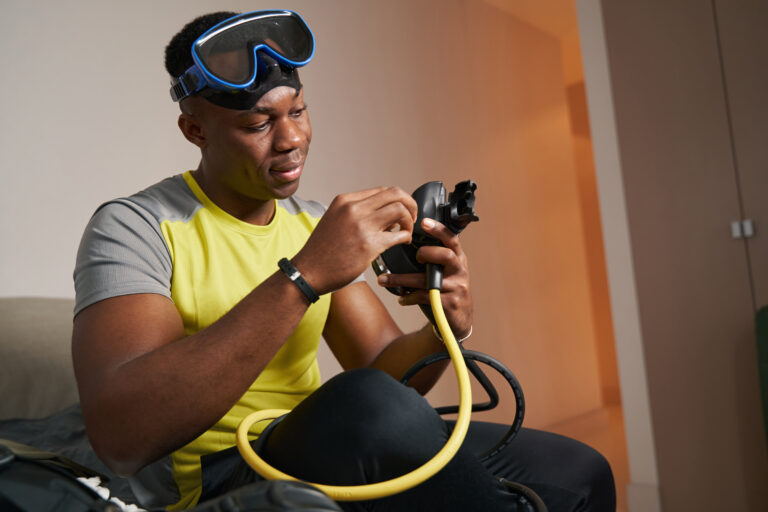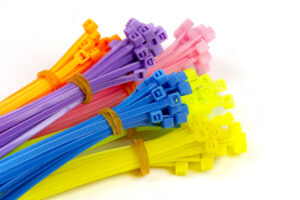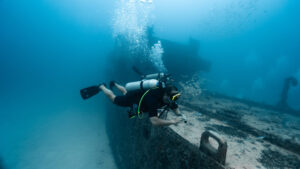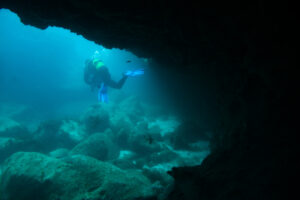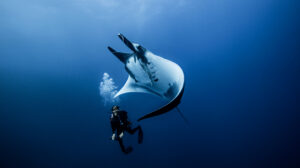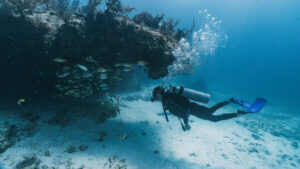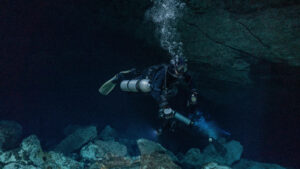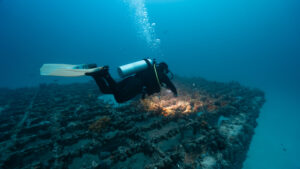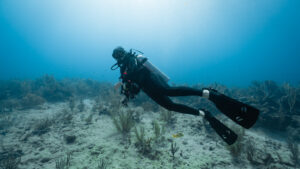What is an Octopus Regulator?
The octopus regulator is an essential piece of scuba diving equipment designed to provide an alternative air source in the event of an emergency. This spare demand valve is connected to the first stage of a diving regulator, ensuring that divers can continue to breathe even if their primary regulator fails. In this entry, we will explore the history, function, and significance of the octopus regulator, as well as its role in improving divers’ safety and fostering a sense of responsibility within the diving community.
Historical Context
The concept of the octopus regulator can be traced back to the early days of scuba diving when divers relied on a single-hose regulator for breathing underwater. As the sport gained popularity in the mid-20th century, divers and equipment manufacturers began to recognize the need for a backup air source to ensure safety in the event of equipment failure or other emergencies.
The octopus regulator was introduced in the 1970s, as the sport of scuba diving continued to evolve and divers ventured into deeper waters and more challenging environments. The advent of this innovative device marked a significant step forward in diving safety, providing divers with an additional layer of protection against potential life-threatening situations.
Function and Components
The octopus regulator is composed of two main parts: the first stage and the second stage. The first stage is connected to the scuba cylinder, while the second stage consists of the demand valve, which delivers air to the diver upon inhalation. In a typical setup, the first stage regulator has two low-pressure ports, one for the primary regulator and another for the octopus regulator. This allows the octopus regulator to share the same air source as the primary regulator, ensuring that it is always available as a backup.
The second stage of the octopus regulator is usually yellow or another highly visible color, making it easy to locate in an emergency situation. It is designed to be lightweight and easy to handle, with a large purge button and a comfortable mouthpiece. Some models also feature an adjustable venturi control, which can help to prevent free-flow and increase the ease of breathing.
Significance and Safety
The octopus regulator is a vital component of a diver’s safety equipment, providing a reliable alternative air source in case of emergency. This can include situations such as primary regulator failure, depletion of the diver’s air supply, or when a diving buddy experiences difficulties and requires assistance. The availability of a backup air source allows divers to remain calm and focused during an emergency, reducing the risk of panic and potentially life-threatening accidents.
By including an octopus regulator in their equipment setup, divers demonstrate a commitment to safety and responsibility. Many diving organizations and training agencies, such as PADI and NAUI, include the use of an octopus regulator as a mandatory component of their certification courses. This emphasis on safety has contributed to the widespread adoption of octopus regulators among recreational and professional divers alike.
Choosing and Maintaining an Octopus Regulator
When selecting an octopus regulator, it is essential to consider factors such as compatibility, performance, and ease of use. Divers should ensure that the chosen octopus regulator is compatible with their primary regulator, as well as the overall configuration of their diving equipment. Performance characteristics, such as breathing effort and resistance to free-flow, should also be considered to ensure a comfortable and efficient diving experience.
Proper maintenance of an octopus regulator is crucial to its performance and longevity. Divers should rinse their octopus regulator with fresh water after each dive, and store it in a cool, dry place away from direct sunlight. Regular servicing by a qualified technician is also recommended, typically every one to two years, depending on the manufacturer’s guidelines.
The octopus regulator has proven to be an indispensable component of a diver’s safety gear, offering a reliable backup air source in case of emergencies. Its widespread adoption among divers and inclusion in diving certification courses reflect the importance placed on safety and preparedness within the diving community. As the sport of scuba diving continues to evolve, the octopus regulator remains a testament to the ongoing commitment of divers, equipment manufacturers, and training agencies to prioritize safety and enhance the overall diving experience.
In addition to its practical function, the octopus regulator also serves as a symbol of the camaraderie and cooperation that characterize the scuba diving community. By carrying an octopus regulator, divers signal their willingness to assist fellow divers in need, fostering a spirit of teamwork and mutual support that is crucial to the success and enjoyment of any dive.
As scuba diving technology advances, the octopus regulator will undoubtedly continue to evolve, with manufacturers striving to develop innovative designs and features that enhance the device’s performance and usability. Nonetheless, the core function of the octopus regulator – to provide a reliable alternative air source in case of emergency – will always remain central to its purpose.
The octopus regulator is an essential component of a diver’s equipment setup, designed to improve safety and foster a sense of responsibility within the diving community. Its history, function, and significance are testament to the progress that has been made in scuba diving safety and technology over the years. By understanding and appreciating the role of the octopus regulator in their underwater adventures, divers can enjoy the sport with greater confidence, knowing that they are well-prepared for any emergency situation that may arise.

